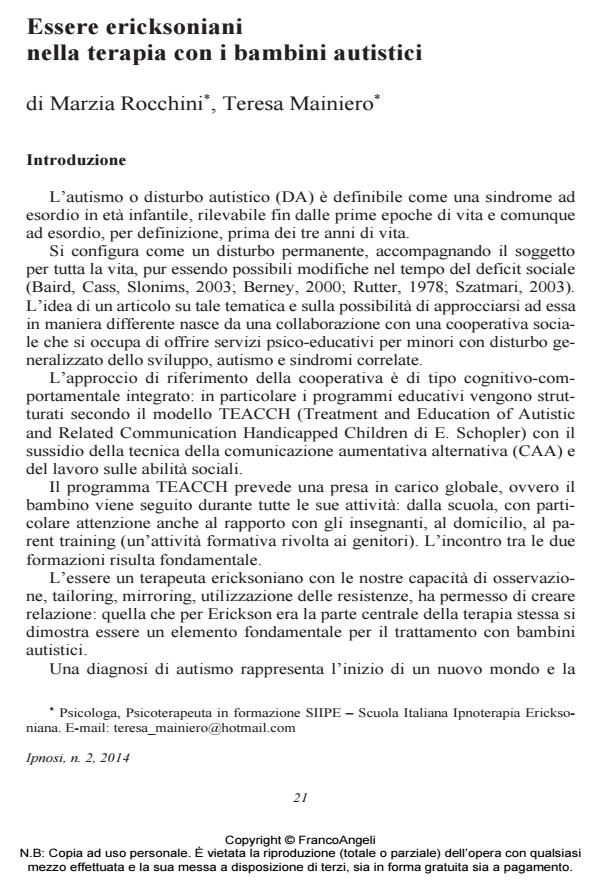Essere ericksoniani nella terapia con i bambini autistici
Journal title IPNOSI
Author/s Marzia Rocchini, Teresa Mainiero
Publishing Year 2014 Issue 2014/2
Language Italian Pages 15 P. 21-35 File size 75 KB
DOI 10.3280/IPN2014-002002
DOI is like a bar code for intellectual property: to have more infomation
click here
Below, you can see the article first page
If you want to buy this article in PDF format, you can do it, following the instructions to buy download credits

FrancoAngeli is member of Publishers International Linking Association, Inc (PILA), a not-for-profit association which run the CrossRef service enabling links to and from online scholarly content.
Autism can be defined as a syndrome with onset in childhood. The symptoms that characterize it limit the child’s development in three areas: social relationships, communication, interests. In this article the authors aim at showing the effectiveness of a combination of the ericksonian and the cognitive-behavioral therapies in producing improvements in the relationships. The core of the ericksonian therapy turns - as far as autistic patients are concerned - into an admission key to a different way of communicating, thus allowing improvements in the relationship also with other figures of reference.
L’autismo è definibile come una sindrome ad esordio in età infantile. I disturbi che la caratterizzano, limitano lo sviluppo del bambino in tre aree: relazioni sociali, comunicazione, interessi. Nel’articolo le autrici, cercheranno di evidenziare quanto l’incontro tra due formazioni, ericksoniana e cognitivo comportamentale, produca dei vantaggi nella relazione. Quella che per Erickson era parte centrale della terapia, diventa con i pazienti autistici chiave d’accesso di un modo differente di comunicare, consentendo miglioramenti relazionali anche con le altre figure di riferimento.
Keywords: Children, autism, treatment, relationship, ericksonian therapy.
Marzia Rocchini, Teresa Mainiero, Essere ericksoniani nella terapia con i bambini autistici in "IPNOSI" 2/2014, pp 21-35, DOI: 10.3280/IPN2014-002002